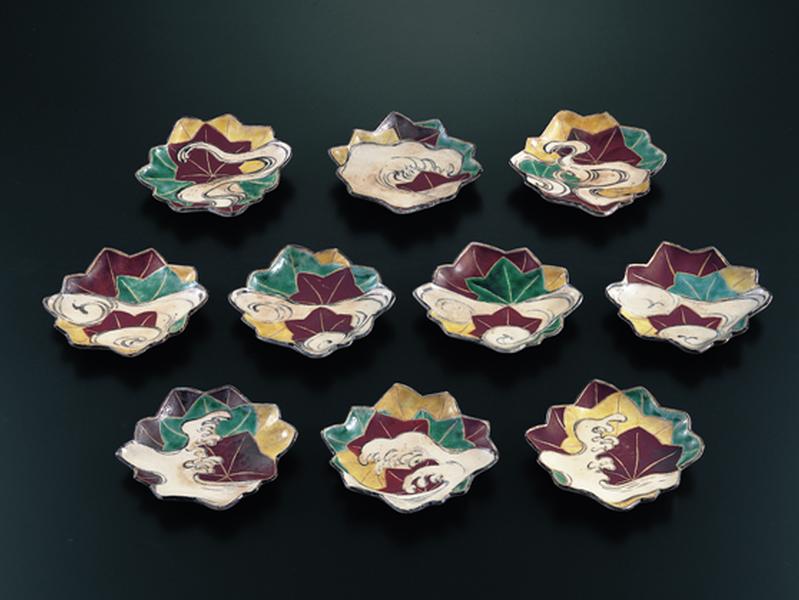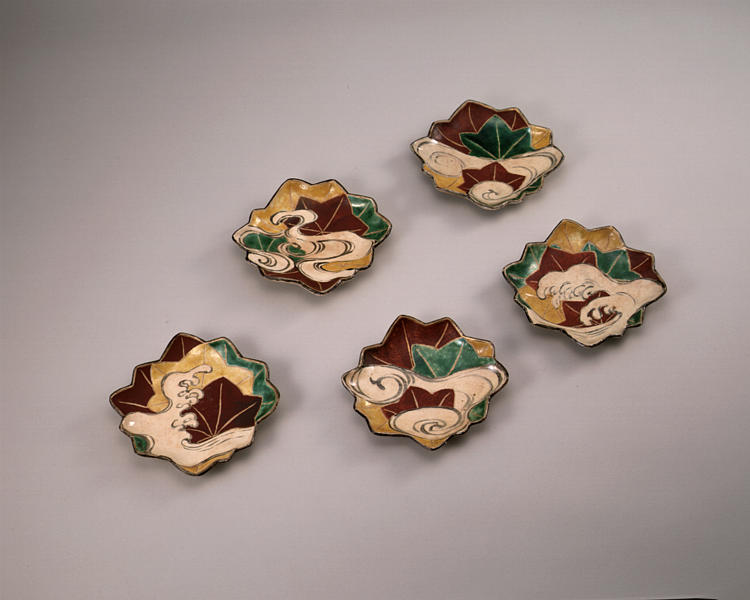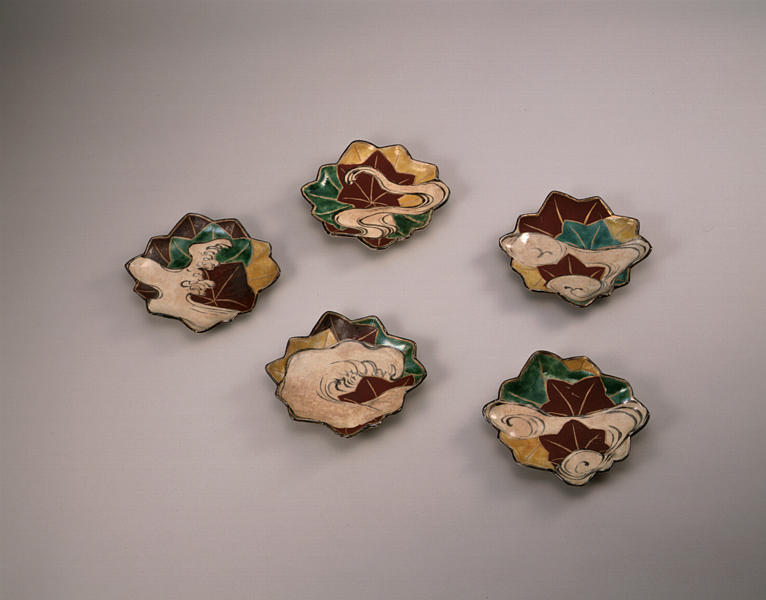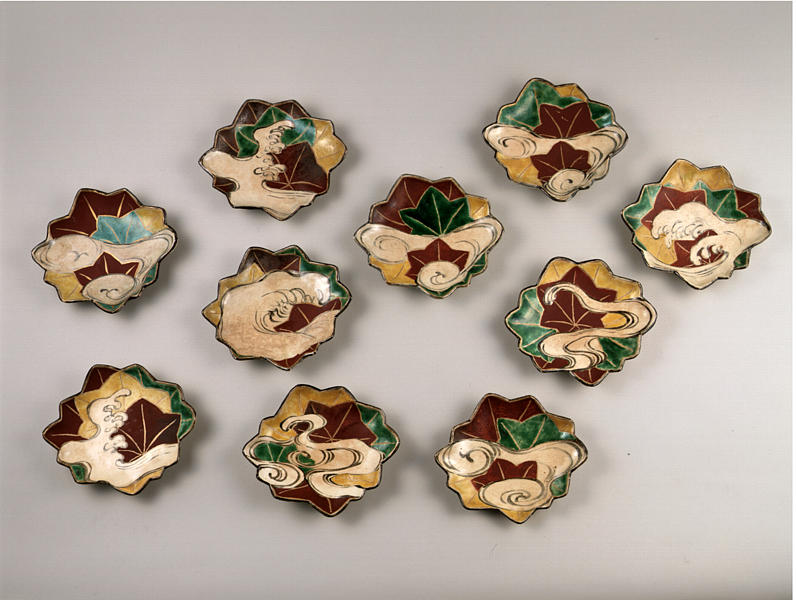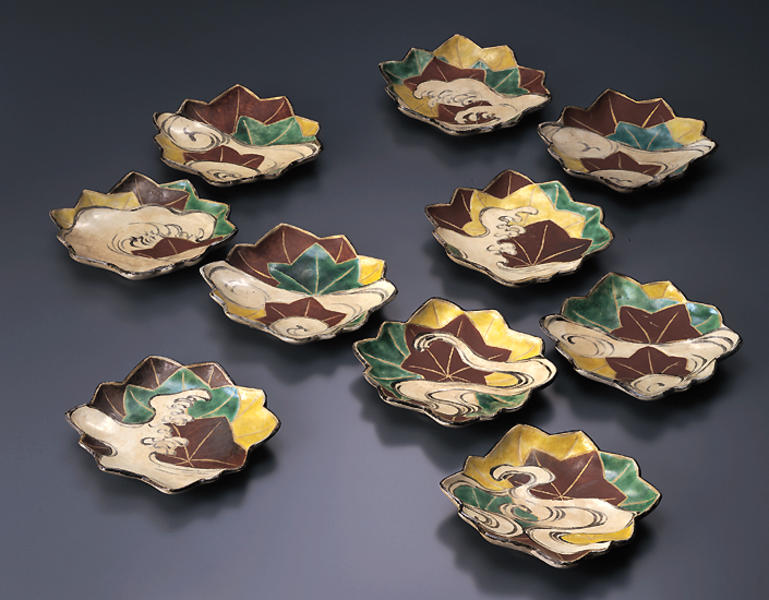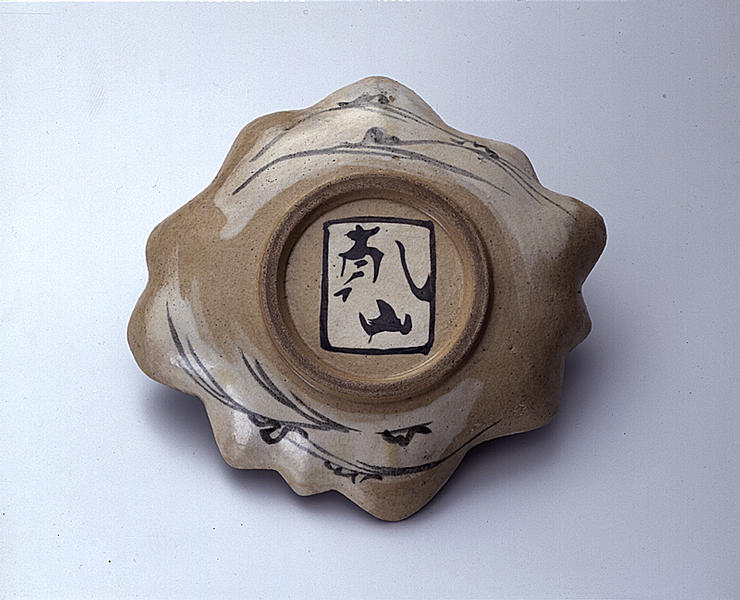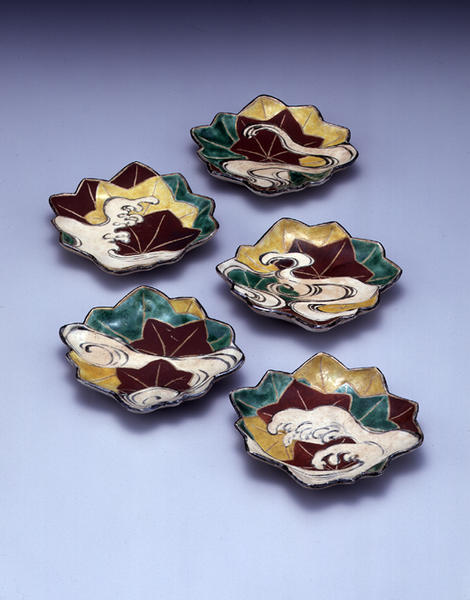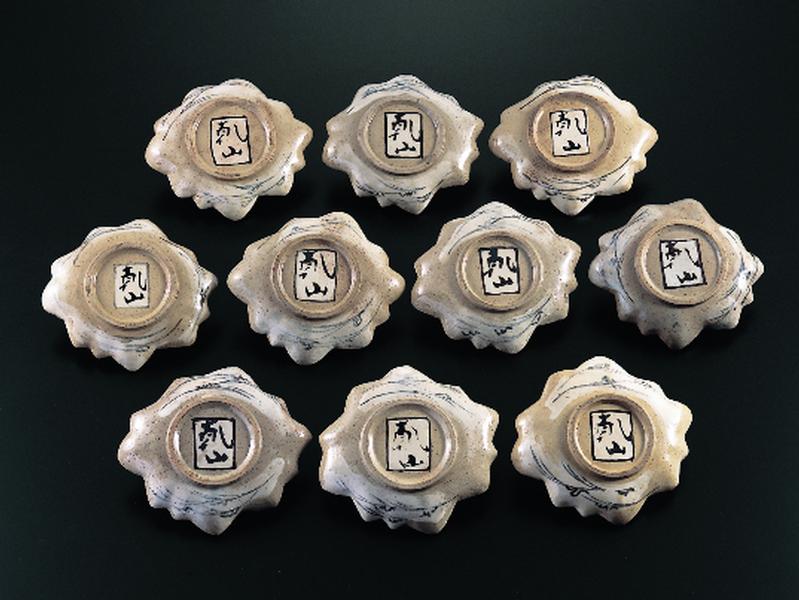Kenzan Mukozuke with Tatsutagawa Design
- Nijo-Chojiyamachi, Kyoto
- Edo period
- 18th century
- Kenzan ware, underglaze and overglaze polychrome
- H-3.4 D-16 W-18.2
- Formerly in the collection of Inoue Kaoru
Catalogue Entry
Set of 10 dishes
Edo period, 18th century
Kenzan ware, underglaze iron and overglaze polychrome decoration
Height, 3.4cm; diameter, 16.3-18.0cm;
foot diameter, 9.0cm
The bodies of these dishes were mold-cast, and then a foot was applied to the molded body. A white slip was brushed onto the plain clay surface, and a flowing water pattern was painted in underglaze iron on this surface. Then a transparent glaze was applied to the entire piece, and the works were fully fired. The overglaze paintings were then formed by outlining layered maple leaves in gold pigment and decorating these leaves with one of three colors of pigment--red, yellow, or green.
All of the ten dishes are inscribed "Kenzan" in underglaze iron in a square frame on the interior of the foot, and yet distinctive differences can be noted in the brush styles of these inscriptions. Further, the variations in the thickness of the overglaze pigments and the manner in which the white slip was brushed (areas where it is applied) also reveal individual characteristics, thus indicating that these works might be considered to have been studio works created by a variety of potters. They can also be considered relatively late examples of Kenzan ware. Generally, the mukozuke dishes of this type are considered to have been works from Kenzan's Nijo Chojiyamachi period, but as similar shaped mold-cast works have been excavated from the Narutaki kiln, it is hard to determine the date of their production. 2 of the 10 dishes have kiln supports still attached to the bottom of their feet. YO
Catalogue Entry
Ogata Kenzan (1663‐1743) was Korin's younger brother. After studying Ninsei's pottery methods, Kenzan established the Narutaki kiln in Kyoto's northwest (sometimes called Ken) and from that his name “Kenzan," or “Ken mountain," was coined. He created a large number of sets of food dishes, and while it is thought that these works were created in a workshop environment by numerous craftsmen, Kenzan himself was superb designer, using these ceramic wares in place of a canvas, brushing on poems, uniquely askew flowers and grasses, and various overglaze enamels. The bodies of these dishes were mold‐cast, and then a foot was applied to the molded body. A white slip was brushed onto the plain clay surface, and a flowing water pattern was painted in underglaze iron on this surface. A transparent glaze was applied to the entire piece, and the works were fully fired. The overglaze paintings were then formed by outlining layered maple leaves in gold pigment and decorating these leaves with one of three colors of pigment‐‐red, yellow, or green. This maple leaf and water motif conveys an image of the Tatsuta River. Skillful variations in the flowing water pattern and colors chosen for the leaves belie the molded nature of these works and exemplify the sheer diversity of Kenzan's creative expression. The interior of the foot of each dish is inscribed “Kenzan" in a square frame.
